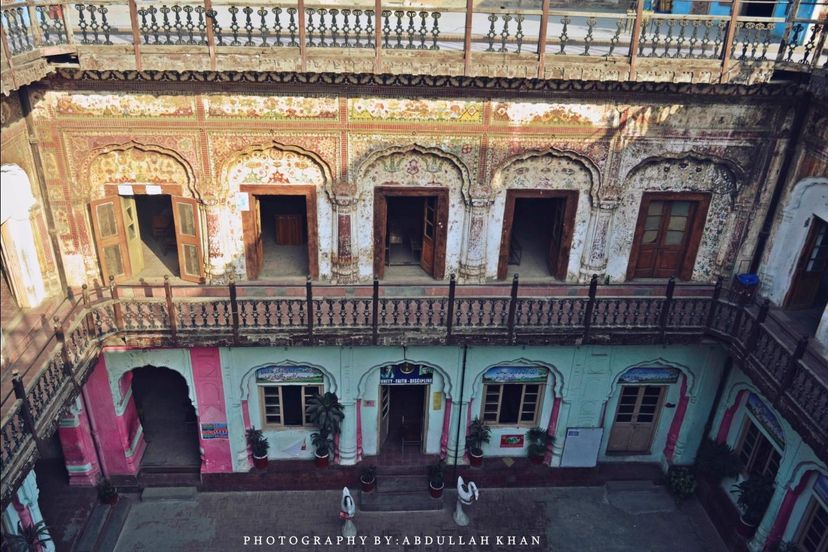
Advertisement
Recently, I had a chance to explore a very historical place in Lahore, Pakistan – Haveli Nau Nihal Singh, a nineteenth century Sikh period haveli of Nau Nihal Singh, the son of Kharak Singh and grandson of Maharajah Ranjeet Singh.
One of the few remaining royal residences from the Sikh period, this Haveli is situated inside the old walled city. Located between the historic Bhatti and Lohari gates, where Mori Gate once stood, a zigzag of narrow streets leads to an open area known as “Maidan Bahian”. Once a large garden, the Haveli is situated at the edge of a field. Currently, there is no remnants of the garden, but the Haveli survives with its full glamour and decorative pattern.
It is an intact structure of over forty rooms with most elements of its original ornamentation preserved on the two main elevations and the interior courtyard facades. Rectangular in plan, the Haveli is a fairly large building. Its entrance is on the West side, and the façade has been divided into two clear sections – one housing the entrance gate, which is abundantly decorated, and the other is simple but has plenty of fenestration. If there was any decoration on this area, it has been destroyed by the ravages of time.

When Ranjit Singh’s grandson Nau Nihal Singh constructed his three-story haveli inside Mori Gate in the Walled City of Lahore, little did he know that it would eventually become a place of learning. Since 1887, the 40-room complex has housed the government-run Victoria Girls High School. Some of the girls who studied here now live in India. Today it has over 1,300 students.

History, however, cannot be ignored in such a place. It is visible in the ornamentation of the facade, the wooden balcony around the courtyard and the frescos painted on the walls. The generations that continue to study at the school bare a sense of it.

The building is one of the few remaining royal residences from the Sikh period. The best feature of the haveli, and the best preserved, is the sheesh mahal on the third floor. The narrow room is made in the traditional style with a wooden ceiling. Geometrical patterns developed with wooden beading, small mirrors and painted designs reflect the influence of the Mughals who once ruled the Subcontinent.
It is intriguing that even though the building was built by Sikhs, it borrowed heavily from Hindu texts in its ornamentation. It is among the best specimens of Sikh mural painting, both in terms of quality and state of preservation.

Advertisement
We as a nation look into history with colored lenses, covered with our very biases. We need to start owning our heritage. We need to look at it with pride, whether it is the Sikh period, the Mughal or the British. It is all a part of our collective identity.
Advertisement
About the author:
Abdullah Khan is a media journalist, creative photographer and anchor person from Pakistan. He can be reached at jurattv.abdulahkhan@gmail.com or on Twitter.
Advertisement